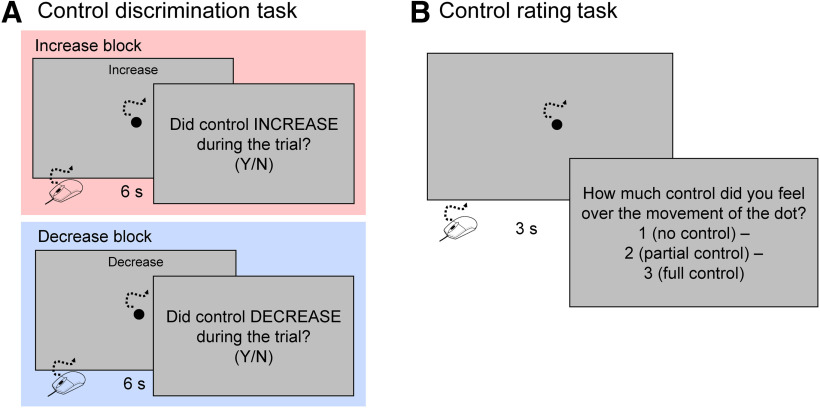Figure 3.
Experimental tasks. A, Control discrimination task. Participants moved a mouse to trigger a 6-s motion of a dot on the screen. At the end of each trial, participants made a binary judgment on whether they felt that their control over the direction of dot’s movement had changed (increased or decreased) during the trial. B, Control-rating task. Participants rated their control over the dot out of three: 1 = no control, 2 = partial control, 3 = full control.

